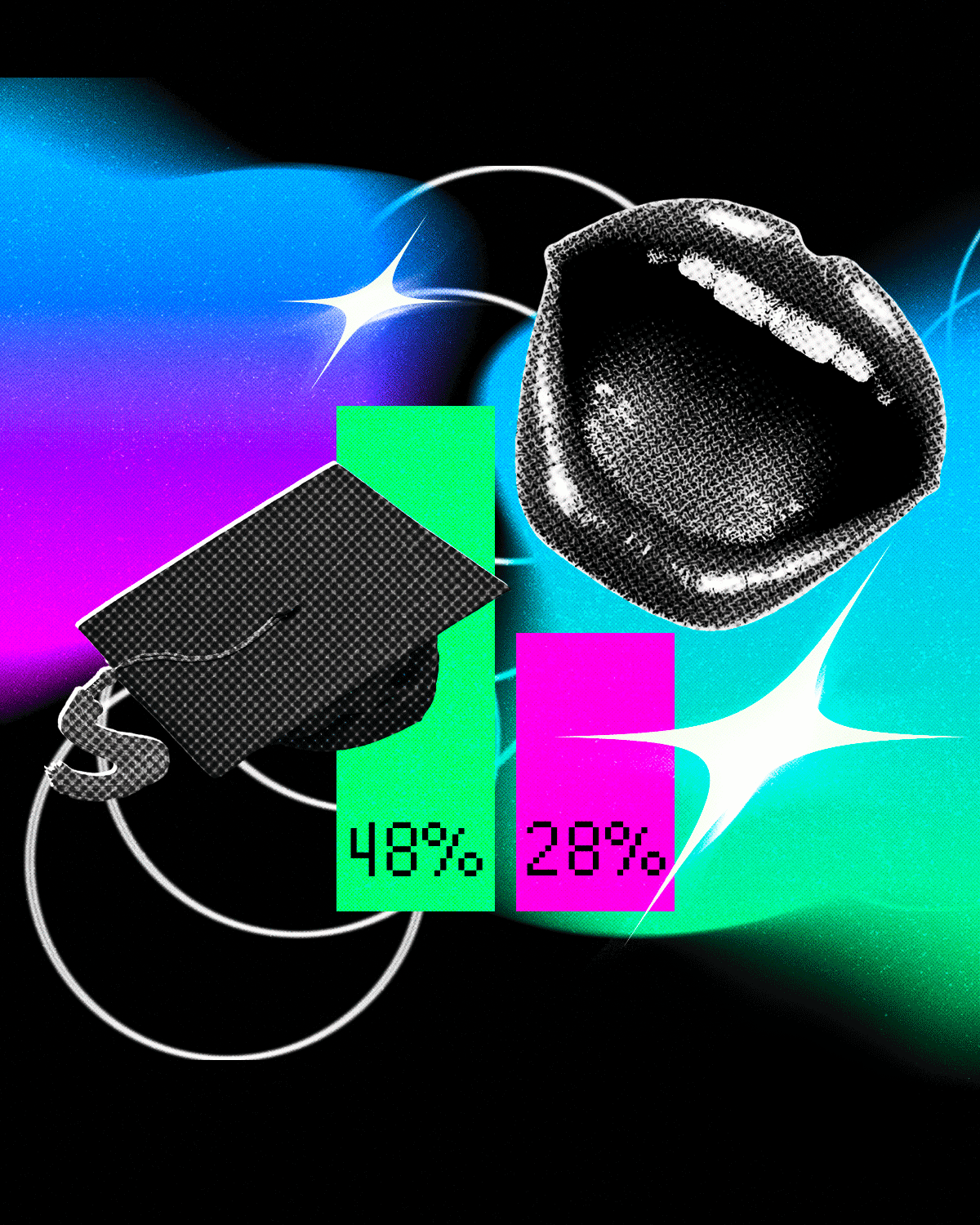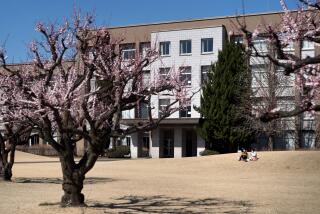The Case of the Disappearing College Men
- Share via
At a time when women are making tremendous gains in higher education, finding more support and earning more advanced diplomas than ever, a troubling phenomenon is occurring on college campuses across the country: The men are vanishing.
An Iowa-based policy analyst is highlighting the trend, which flips the age-old gender gap in higher education. Thomas G. Mortenson told a gathering of regional college presidents and deans at Goucher College earlier this week that he believes it signals deeper problems in society.
“There is an absolute revolution going on in terms of college participation,” he said. “Women are succeeding, and men are failing.”
Mortenson’s research shows that although men earned nearly 57% of the four-year degrees awarded at U.S. institutions in 1970, women were claiming more than 55% by 1996. He argued that the declining presence of men on increasingly female-dominated campuses may indicate greater ills, from the loss of male role models for boys to worldwide changes in the workplace.
The consequences, he argued, could be dire for men, because college degree-holders typically earn far more than high school graduates do.
Mortenson said that many educators have ignored the trend, which he is crusading to publicize, and that he has been “brushed off” by women’s organizations. Yet his ideas seem to be gaining some traction, judging by the response he received at Tuesday’s symposium, which the Towson, Md., institution organized around his findings.
Judy Jolley Mohraz, president of Goucher, formerly an all-women’s college, said the issue is important to her school--where the student body is only one-third male after 13 years of coeducation--and to all liberal arts colleges interested in the question of “how we can educate young men and women together.”
Many campuses reflect the trends highlighted by Mortenson. At George Mason University in Fairfax County, Va., and George Washington University in Washington, 55% of the undergraduates are women. The University of Maryland at College Park bucks the trend, with roughly as many men as women receiving bachelor’s degrees. Yet at Bowie State, Md., nearly twice as many women as men receive diplomas.
Mortenson’s theories received some support from two Harvard psychologists who also spoke at the symposium. Daniel J. Kindlon, an expert on child development, said many boys start to fall behind in elementary school, where “impulse control” problems may get them branded as troublemakers, and they have few male teachers as role models.
“You put boys in that environment, where girls are at an advantage in maturation and have more role models. They look around and say, ‘This game is fixed!’ ”
Catherine Steiner Adair, a clinical and research psychologist, argued that as a response to the women’s movement, men and boys have retreated into “anti-intellectual and Neanderthal versions of masculinity.” Today’s popular culture reinforces those stereotypes, with many male television or movie characters shown as dolts or violent he-men, she said.
But while the gender gap may seem dramatic, the news is not all bad for men, another speaker noted. Jewelle Taylor Gibbs, a professor of social policy at UC Berkeley, said the rate of college enrollment among men has slackened but is still growing--just not as fast as women’s, which tends to exaggerate the gap.
Other academics offered a more nuanced view of Mortenson’s argument. “The statistic doesn’t tell the whole story,” said Pamela Haag, director of research for the American Assn. of University Women, who did not attend the symposium. “When you look at the campus, there are still persistent problems for women.”
Men, she said, still dominate academic fields such as engineering and business that lead to higher-paying jobs, and women dominate teaching and nursing programs. And women’s increased presence on campuses may be a matter of necessity rather than privilege, Haag argued: “Women need a college degree to earn the same as a man with a high school degree.”
More to Read
Sign up for Essential California
The most important California stories and recommendations in your inbox every morning.
You may occasionally receive promotional content from the Los Angeles Times.













